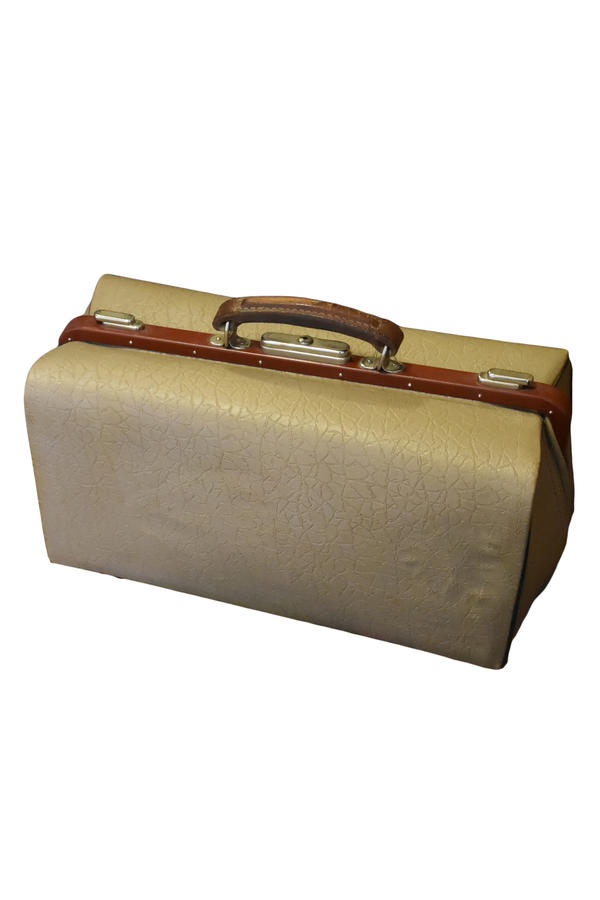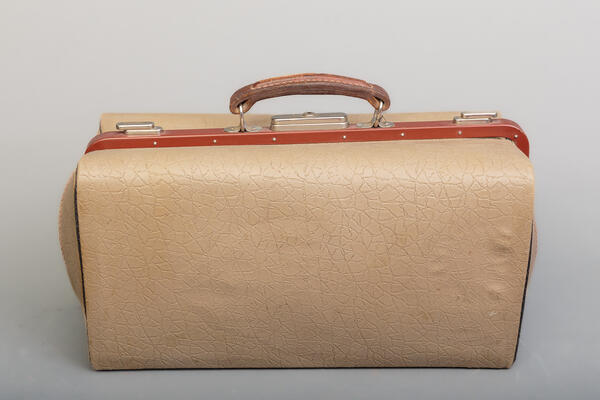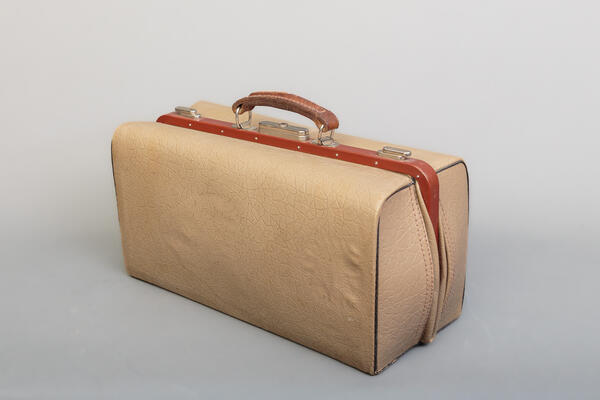A valise is a slightly larger than an average size bag with a small solid handle. Its name literally translates from French as a “travel bag” (sac (de) voyage). However, the homeland of this article is not France, but America. In the mid-19th century, active construction of railroads and the affordable ticket prices increased the general interest in travel. Consequently, there was a demand for practical means of inexpensive luggage storage and transportation.
The first valises were made of parts of old carpets, therefore they were called “carpet bags”. They were not very durable, but handy: they could easily store clothes, toiletries and other necessary things, but the empty bag could be just rolled up so it took almost no space. Such accessories had one lock. This innovation was especially appreciated by merchants, who had to travel a lot.
Later valises were made of leather, which increased not only their durability and practicality but also their cost. Bags were no longer affordable; they became an expensive luxury item. Thus, the valise gradually took its place in the world of fashion as an essential accessory for lawyers, doctors and business men, becoming in some way the “face” of a respectable person. By the quality and the appearance of the valise it was easy to judge how successful the owner was. Only expensive leather was used for its manufacture, the handle was made of leather and metal, secure clasps were used. Instead of personal belongings, it became common to carry professional tools, important documents and business papers in it. Some owners personalized their valises with their initials.
French fashion designers invented a new model of a valise. It consisted of two panels of rectangular shape with a metal bar on the top, a lock, two short handles and a strap to carry it on the shoulder.
The 20th century was marked by the mass move away from heavy, bulky outfits with lots of decorations. Progress, a new, dynamic rhythm of life required comfort and practicality. These requirements were fully met by a reliable and comfortable valise.
Today, like in the old days, it is still considered a standard of elegance, wealth and good taste and can be put on a par with dinner jackets, expensive boots and wristwatches.
The first valises were made of parts of old carpets, therefore they were called “carpet bags”. They were not very durable, but handy: they could easily store clothes, toiletries and other necessary things, but the empty bag could be just rolled up so it took almost no space. Such accessories had one lock. This innovation was especially appreciated by merchants, who had to travel a lot.
Later valises were made of leather, which increased not only their durability and practicality but also their cost. Bags were no longer affordable; they became an expensive luxury item. Thus, the valise gradually took its place in the world of fashion as an essential accessory for lawyers, doctors and business men, becoming in some way the “face” of a respectable person. By the quality and the appearance of the valise it was easy to judge how successful the owner was. Only expensive leather was used for its manufacture, the handle was made of leather and metal, secure clasps were used. Instead of personal belongings, it became common to carry professional tools, important documents and business papers in it. Some owners personalized their valises with their initials.
French fashion designers invented a new model of a valise. It consisted of two panels of rectangular shape with a metal bar on the top, a lock, two short handles and a strap to carry it on the shoulder.
The 20th century was marked by the mass move away from heavy, bulky outfits with lots of decorations. Progress, a new, dynamic rhythm of life required comfort and practicality. These requirements were fully met by a reliable and comfortable valise.
Today, like in the old days, it is still considered a standard of elegance, wealth and good taste and can be put on a par with dinner jackets, expensive boots and wristwatches.





